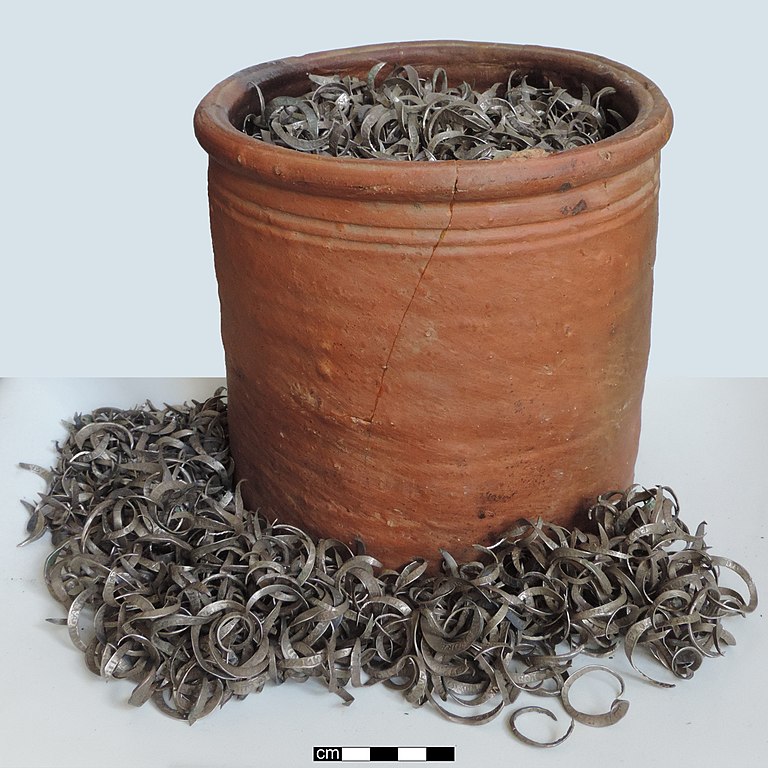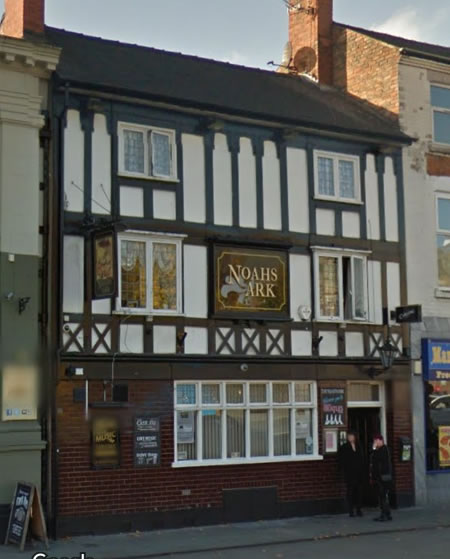PAS Finds – Coin clippings
My selection of the detecting finds recorded at the PAS in the week ended 15 December 2023.
Featured Find
Hoard of coin clippings
The image is one of a small hoard of four coin clippings. It is difficult to identify the coins with certainty but two have been cautiously attributed to Charles I.
Coin Clipping
Coin clipping has been practised since the Roman period and various measures have been employed in an attempt to prevent it. Henry III introduced ‘Long Cross’ pennies from 1247 onwards, which made it harder to shave silver off the edges without it being noticeable.

The edge of the milled crowns of Oliver Cromwell bear the inscription “HAS NISI PERITVRVS MIHI ADIMAT NEMO” meaning “Let no one remove these from me under penalty of death“.
The penalties for clipping coins had always been severe. In 1690, Thomas and Anne Rogers were tried and convicted of the “horrid crime” of clipping 40 silver coins. Thomas was “ordered to be drawn from a sledge to the place of execution, to be hanged by the neck, cut down alive, their bowels burnt, their bodies quartered, and to be disposed of at their Majesty’s pleasure“. The mutilation of women’s bodies was considered inappropriate and so Anne was simply burned alive.1
Hoards of clipped coins
Hoards of coin clippings are more common in the north of the country. That reflects the fact that the clipping of coins was more prevalent in the north, perhaps because of its remoteness.2

Photo: Derby Museum trust, CC By SA2.0
This ceramic pot was a “chance find” in 1971 and contains some 1Kg of coin clippings. The clippings are from coins of Philip and Mary through to Charles I.
In 1846 another hoard of clippings, weighing some 3.6Kg, was found only a few metres away and so quite possibly buried by the same person.2
Noah’s Ark
These large hoards show that, despite the severe risks involved, some individuals set about coin clipping on an industrial scale. One such person was Noah Bullock, who lived in Derby in the 17th century. It’s not clear whether he was religious but he named his three sons Shem, Ham and Japeth, after the biblical Noah’s sons, and built himself an ark. The sight of an ark on the river Derwent piqued the interest of the townsfolk – either he was trying to avoid the plague or he had indeed become gripped by some religious fervour.
The truth was much more nefarious. He was using it as a base for his coin clipping operation. In 1676 the ark was raided and his crimes exposed. Fortunately for Noah, he knew the Recorder for Derby, Sir Simon Degge and avoided the death penalty after promising to end his criminal activities and destroy his ark.

The Noah’s Ark pub in Derby is said to be named after Noah Bullock. It was established in the first half of the 18th century and it is even said to be visited by his ghost.4 Possibly, but there are several other Noah’s Ark pubs dotted around the country and it seems a bit odd to haunt a place that didn’t exist when you were alive.
References
- JOHN LOCKE, CLIPPED COINS, AND THE UNSTABLE CURRENCY OF PUBLIC REASON, Douglas Carson
- Besly, E., 1987. English Civil War Coin Hoards, British Museum Occasional Paper 51
- PAS record DENO-060EAA
- Discover Derby – Noah’s Ark


